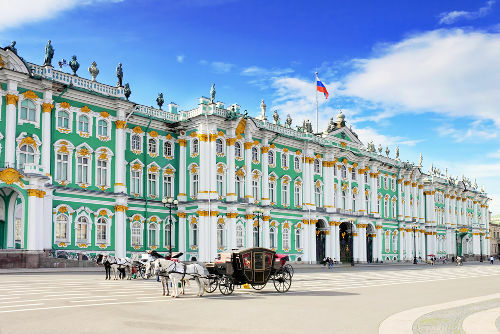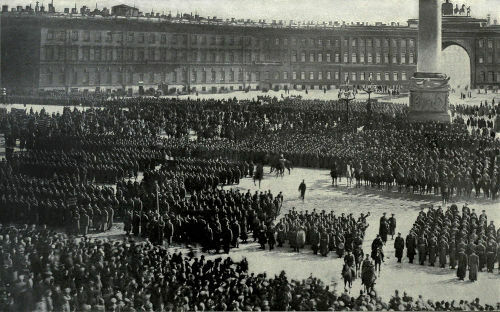THE city of Saint Petersburg is the second largest city in Russia, with about 5.3 million inhabitants in 2017 estimates. The city on the Neva River is an important industrial center and one of the most Europeanized cities in Russia. Founded in 1703 by the tsar Peter I, the city of St. Petersburg went through several remarkable events, especially in the 20th century.
St. Petersburg was the capital of Russian Empire for more than two centuries (1712-1918), ceasing to be capital after the Soviets chose to transfer it to Moscow. Throughout its history, the city of St. Petersburg has had its name changed a few times: They arepetersburg (1703-1914 and 1991-currently), Petrograd (1914-1924) and Leningrad (1924-1991).
Throughout its history, the city of St. Petersburg has housed important figures in Russian history, such as the writer Fyodor Dostoevsky and the composer Piotr Ilitch Tchaikovsky. Furthermore, the current President of Russia, Vladimir Putin, was born in the city on October 7, 1952.
St. Petersburg City Foundation
The foundation of the city of St. Petersburg took place on the day May 27, 1703, during the reign of tsar (emperor) Peter I, also known as Peter the Great. St. Petersburg is located in northwestern Russia and was built after that region was conquered by the Russians in a war against the Swedes that became known as Great Northern War (1700-1721).
The construction of St. Petersburg was carried out in a marshy region located at the mouth of the Neva River with the Gulf of Finland. Peter I's idea when building St. Petersburg was to expand Russia's contact with the nations of Western Europe, in addition to guaranteeing strategic access to the Baltic Sea.

Statue in honor of Russian tsar Peter I, considered the founder of St. Petersburg
The construction of St. Petersburg was determined by Tsar Peter I after several trips made by him to various European metropolises at the time, such as Amsterdam and London. The city's architectural project was even carried out taking inspiration from the model of the Dutch city of Amsterdam. St. Petersburg was built under extremely adverse conditions, especially because of the geographic impositions of that region.
Located at the mouth of the Neva and the Gulf of Finland, the St. Petersburg region in the early 18th century was swampy and prone to flooding. To support the mission to build the city, Tsar Pedro I ordered thousands of people to be forcibly transferred to the region to work on building the city.
Historians estimate that around 30,000 people |1| have died during this construction, victims of harsh working conditions, as well as diseases that have spread among the workers, such as dysentery, scurvy and malaria. This made St. Petersburg known as the “city built on bones”.
Pedro I forced thousands of people to move to the new city, and years after winning a victory important in the war against the Swedes (Battle of Poltava), made St. Petersburg the capital of Russian Empire. The Russian tsar also forced several nobles to move to the new capital under threat of losing their title of nobility, in addition to forcing them to cover their expenses for the move. From there, St. Petersburg developed as the Russia's link with Europe.
St. Petersburg in the 20th century
Throughout the 20th century, the city of St. Petersburg was the scene of important events in both Russian and world history.
Initially, it is worth highlighting the name changes that the city suffered throughout this period. The first change took place in 1914 from St. Petersburg to Petrograd. This name change was a consequence of the beginning of First World War, when Germany and Russia were enemies. The objective was to remove the Germanic influences "sankt" and "burg” of the city name in the original Russian (Sankt-Peterburg). The change to Petrograd in Russian (Petrogrado, in Portuguese) it meant “city of Pedro”.
This name remained until 1924, when, as a result of the death of Vladimir Lenin, the Soviet government chose to rename the city of Petrograd to Leningrad (Leningrad, in the original in Russian). This name remained until 1991, when, after the disintegration of the Soviet Union, a referendum held in the city determined, by choice of the citizens, the restoration to the original name of St. Petersburg |2|.
Do not stop now... There's more after the advertising ;)
The trajectory of the city of St. Petersburg in the 20th century can be started with a 1905 event known as Bloody Sunday. This event took place on January 9, 1905, when troops from the Tsar Nicholas II opened fire on a crowd protesting peacefully in front of an emperor's palace known as winter palace.

Winter Palace, home of the Russian tsars and place where Bloody Sunday took place in 1905
This protest was a consequence of the poor working conditions with which the population of St. Petersburg had to deal with the city's factories and industries. The industrialization process in Russia was late – started in 1890 – and the city of St. Petersburg became an important industrial center in Russia. Working conditions, however, were appalling, and workers were ill-treated.
The situation of poverty combined with ill-treatment and poor working conditions resulted in strikes and workers' demonstrations. so on the day January 9, 1905, a mob decided to petition Tsar Nicholas II demanding improvements in living conditions. The emperor's palace guard opened fire on the protesting population peacefully.
There is disagreement among historians as to whether the massacre was intentional or not. There are those who claim that the shooting started accidentally, without the order to open fire, and others claim that there was an intention to attack the population as a form of repression. In any case, this event spread a revolutionary fervor across Russia known as General Rehearsal of 1905.
During the Revolution of 1905, a form of organization of workers emerged that became known as soviet and that was fundamental during the Russian revolution. The St. Petersburg Soviet was dismantled by the repression of the tsarist government in 1905, but in 1917 the the city's soviet (already renamed Petrograd) was instrumental in the success of the Bolsheviks during the October Revolution, which turned Russia into the first socialist nation in history.

Troop gathering during the October Revolution. In the background is the Winter Palace in St. Petersburg
The most remarkable event in the city's history took place during the Second World War. With the invasion of the Soviet Union by Nazi Germany, the city (now renamed Leningrad) was besieged by German armies in a siege which spanned nearly 900 days. The siege began on September 8, 1941 and was only broken on January 27, 1944.
With the continuous advances of German troops on Soviet territory, the Nazi command chose to encircle the city of Leningrad and leave it starve. Isolated, the inhabitants of the city of Leningrad suffered from hunger, as Moscow could only send provisions to the city when Lake Ladoga froze.

Monument in honor of victims who died during the siege of Leningrad in World War II*
Historians point out that the siege in the city, in addition to spreading hunger, spread disease among the inhabitants. It is estimated that approximately 1 million people died during the siege. At the height of the food shortage, the Soviet authorities also recorded approximately two thousand cases of cannibalism.
After the end of the Soviet regime, as mentioned, the city was renamed St. Petersburg. Currently, it is an important economic center in Russia, having an important industrial hub, especially in heavy industry, such as steel and shipbuilders. In addition, the city is a very important scientific hub.
|1| The Bloody Foundation of St Petersburg. To access, click on here [in English].
|2| Leningrad, Petersburg and the Great Name Debate. To access, click on here [in English].
*Image credits: Lyudmila2509 and Shutterstock
By Daniel Neves
Graduated in History

